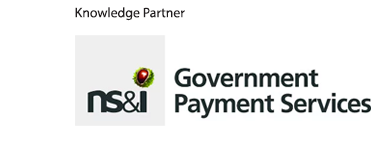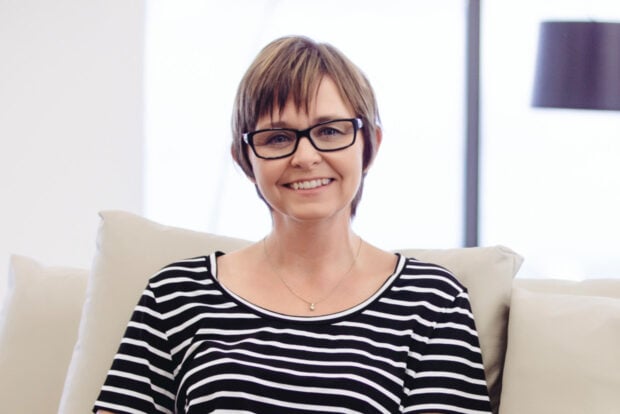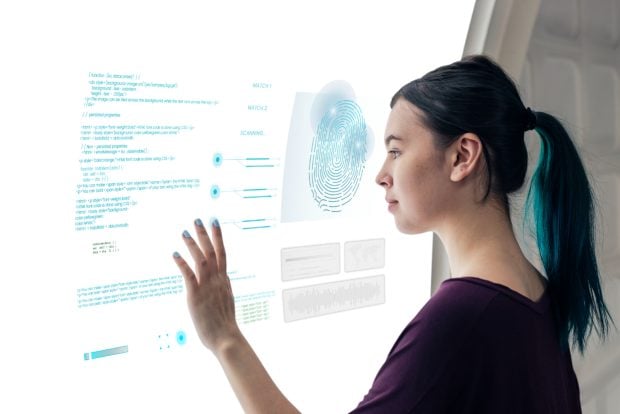Maria Robertson, Deputy Chief Executive, New Zealand’s Department of Internal Affairs: Exclusive Interview

Many governments talk the talk about focusing on the customer – but New Zealand is actually walking that road. Matt Mercer asks Maria Robertson, the DIA’s service delivery chief, to review the country’s journey towards citizen-centred services
Maria Robertson has a lot on her plate – though perhaps not literally. The deputy chief executive of New Zealand’s Department of Internal Affairs (DIA) is speaking from her kitchen at home, in between fielding evening calls from colleagues and as family members jostle in the background for that final slice of pizza. Distracted by my call, she is unlikely to win this struggle.
But whilst Robertson may be losing the pizza battle, she has had much more success in the long campaign to transform the DIA’s services – which include all the identify and life services for New Zealanders and everyone who wants to become one, including births, deaths, citizenship, passports and much else. During her six years in the post, she’s witnessed politicians coming and going; overseen the extensive deployment of new technology; and helped start something of a revolution in how her country manages its citizens’ interactions with government services.
It’s no surprise, then, that her role has changed enormously since she first pitched up for work. “We’ve gone from being a big operational shop, where it was really about providing some sense of direction and cohesion, to providing much more leadership right across the public service,” she explains. “We’re now looking at how we in government do things far more broadly, as well as providing opportunities for others to leverage our investments and the way we work.”
Starting smarter
Nowhere is this more evident than in the government’s attempt in recent years to “reimagine” public services. It has done so by identifying and mapping 30 of the most common life events that cause citizens to interact with the public sector, then seeking to reconfigure services around each event – from the birth of a child, through buying a new house, to a death in the family.
In each case, the goal has been to avoid the need for citizens to repeat the same conversations with different arms of government – streamlining the process and condensing it into a single interaction with government. The aim, as she says, has been to put the customers rather than departmental boundaries at the centre of service design.
For Robertson, a prime example of this new approach is SmartStart: a one-stop shop that enables new parents to access all relevant benefits and services without having to visit different offices or departmental websites. “I’m really pleased with SmartStart because it’s a great example of how a bunch of colleagues can work together to do something that is fundamentally different and have a massively positive impact on vulnerable people,” she says, the pride in her voice palpable.
Citizens at the centre
SmartStart’s origins can be traced to two events. First, there was the identification in 2012 of 10 Key Results that the government wanted to achieve over the following five years. One of them – Result 10 – set the goal that citizens should to be able to “complete their transactions with government easily in a digital environment”. Here, policymakers fell just short of their 70% target, with 68% of such transactions being handled online by the 2017 deadline.
However, the programme succeeded in focusing hearts and minds on putting citizens first – and contributed to the country being named as one of the “standout” digital nations in the 2017 Digital Planet report by the Fletcher School at Tufts University.
The second catalyst, recalls Robertson, was a conversation she had with an old friend while they were shooting the breeze one summer holiday. “We were talking about getting to the stage in our lives, approaching our 50s, where our parents were starting to die,” she says.
“We talked about all the phases of life we had been through together and it made me think that many of these are actually quite predictable – like children getting older and starting to leave home. It prompted me to have a series of conversations with colleagues where I asked them to map out from birth to death the kind of things that people go through; and what occurred to me was that it was actually quite uniform.”
Although she is quick to stress that the details in each event often differ hugely – “having a child is one thing; having a child with special needs or losing a child at birth is something else entirely – there was a predictability about the situations that people go through in various periods of their life. She then asked her team to examine what citizens are entitled to and can expect when it comes to the birth of a child event.
“What came back shocked me,” she adds. “They told me that between pregnancy being confirmed, and your child being six to nine months old, there are between 25 and 28 totally predictable interactions with government agencies or local health providers that parents would have to go through.” Just nine months later, SmartStart went live.

Maria Robertson with her 2 sons, Elliot left & Nicholas right.
The power of people skills
Since its launch in December 2016, the portal has found an enthusiastic audience amongst New Zealand’s new parents – and those contemplating parenthood. “SmartStart is used by more New Zealanders than there are births in the country each year,” says Robertson. “I think this is because it is responding to people’s needs not only about the situation they themselves find themselves in, but also about the situation they could or want to find themselves in.”
For those who’ve previously navigated New Zealand’s landscape of childbirth and infant services, the one-stop shop is a big step forward. But getting several public bodies to commit to shared projects is rarely easy; how did Robertson convince departments – including social development, health and inland revenue – to work in unison?
“The key thing was having someone prepared to stand up and lead from the front,” she replies. “It comes down to the people. I was lucky enough to re-employ a former colleague who had a way about him that was perfect for getting people to work together. You need to have people with the right style – especially when you’re not relying on a mandate – to make things happen; and I think this is still not sufficiently recognised by government.”
She goes on to say that while technical skills remain important, people skills can be still more valuable in moving ideas from concept to delivery. “People skills are what it’s all about,” she says. “I still think we are anchored a bit in the past by being policy-led. But this [traditional] model is being challenged around the world, because it no longer chimes with what public service users – consumers – now demand and expect.
“They want the responsiveness, choice and personalisation they encounter in things like online banking and shopping. This is what government has to try and match; and the only way to do that is if we employ a range of different capabilities – starting with getting people who understand people skills into positions of influence.”
How to get stuff done – New Zealand style
Prior to joining DIA, Robertson spent nearly six years at the Department of Building and Housing. From both experiences, she has identified some key lessons – starting with being very clear about the problem you are trying to solve. This, she says, is particularly crucial when it comes to “re-imagining” public services. “Re-imagining means re-imagining the problem you are trying to solve,” she explains. “Otherwise you find yourself re-engineering the existing problem and the existing way of solving the problem.”
Another priority is to engage with the community you serve before producing a plan. “The last thing you should do is write a paper and then go and consult,” she says. “You don’t want to find yourself defending a position in the public arena before hearing what the people there have to say about a particular issue. For example, we have developed a similar service to SmartStart which is around the end of life. Here, my team engaged with people who have terminal illnesses, or who have lost loved ones or are facing the death of a loved one, to try and understand the world from their perspective. They would have had very different conversations if they had first sent them a discussion document.”
And her third biggest lesson is about embracing the unknown. “I really struggle with how you innovate if you’re being forced to find the answer, which is often a technical solution – and then work back from that to get the money for it,” she explains. “So, I’ve learned to find the joy in ambiguity, and to celebrate the lack of an answer sometimes. To be effective as a leader, I have to be comfortable with not always having an answer; and that means encouraging others to not always have an answer either. That way we all adopt a truly creative mindset. So, for me, admitting that ‘I don’t know’ can be the best way of exploring what’s possible.”
What’s next?

“To be effective as a leader, I have to be comfortable with not always having an answer; and that means encouraging others to not always have an answer either. That way we all adopt a truly creative mindset”
As the clock ticks towards Robertson’s sixth anniversary in post, she remains fired up by the challenges ahead, but also wary of outstaying her welcome. “I’ve worked in a number of organisations where I have been there more than four or five years, and there is a point where you become part of the fabric and a person with almost a full cycle of memory,” she says; that kind of experience gives staff the organisational knowledge to devise and deliver projects successfully. “But there is a fine line between that and feeling like you have become part of a repetitive cycle. So there are real advantages, but there are also disadvantages of feeling like you have stayed too long.”
Whatever the future holds, Robertson’s belief in the power of government to do good remains undimmed. “We’re all about improving how New Zealanders are identified and get the opportunity to be called ‘a New Zealander’,” she concludes. “And as a proud New Zealander myself, it’s tough to think of something more important.”
Global Government Forum: Five Thoughts for Better Government
To help our readers get the best out of Global Government Forum, we ask interviewees five standard questions – four seeking practical advice and opinions, and one to reveal something a little more personal. This is an edited version of Maria Robertson’s answers.
Can you name one lesson or idea from abroad that has helped you or your colleagues?
“One that always strikes me is the way Estonia stores its data about their citizens on servers that are located offshore but are in their embassies. I think the way they have considered risk to their country and risk to the data and rights of their citizens is something that has been quite exceptional.”
Are there any projects or innovations from your country that would be valuable to your peers overseas?
“I think that our genuine openness to putting the customer and citizen at the centre of everything we are doing is something we absolutely demonstrate day in, day out, and I would hope that there would be lessons in that for others.”
How can we improve the ways which senior public officials work with and learn from their colleagues overseas?
“The best way to improve the way we engage with others is by forming trusted and reliable relationships with people when we meet them at forums, conferences and so on. It’s not the events themselves, but rather the relationships you form at them that should always be the priority.”
What are the biggest global challenges in your field over the next couple of years?
“As wildly unpopular as this might sound, I think one of the biggest challenges is our preoccupation with digital. Many conversations I hear about digital government leave me cold, as they are missing the point. [A focus on digital] makes the government channel the hero of the story, when actually none of us should work here for ourselves. At the end of the day, the real reason we all have jobs is to deliver services to people.”
What’s your favourite book?
“Right now my favourite book is a cycling manual, which I’m reading in support of my eldest son –a keen racer. I travel around New Zealand with him to his cycling events and I have to keep my eye on exactly what event he is supposed to racing in at any given time. So this is certainly the reading material that I have closest to hand when I’m at home these days!”






















